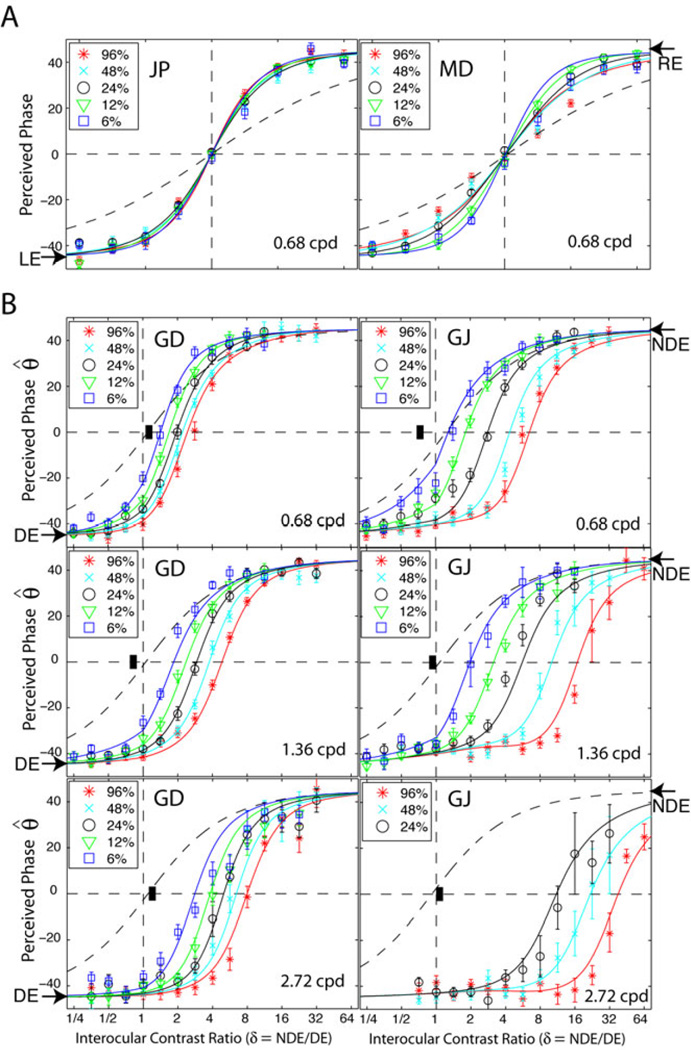Figure 3.
Results from our previous studies 9, 30. Perceived phase θ̂ of binocularly-combined cyclopean sine waves as a function of the right eye/left eye (RE/LE) or non-dominant eye/ dominant eye (NDE/DE) contrast ratio (δ ) for two normal observers (A) or two amblyopic observers (B), when the base contrast m is 96% (*), 48% (x), 24% (○), 12% (∇), or 6% (□). The phase difference of the two eyes’ sinewave gratings was fixed at 90 deg; LE’s (or DE’s) was −45 deg indicated by arrows in the left side and RE’s (or NDE’s) was 45 deg indicated by arrows in the right side. When δ ≤ 1 the DE’s grating contrast was fixed at base contrast m and δ was increased by increasing the NDE’s contrast (δ m). When δ ≥ 1 the NDE’s contrast remained constant at the base contrast m, and δ was increased by decreasing the DE’s contrast (m/δ). The solid curves are the best fits from the DSKL model (a modified Ding-Sperling model). The black dashed curve is the prediction of linear summation, the asymptote of the DSKL model at zero gain-control energy. The short black bars indicate contrast threshold ratios. Error bars: ±SE.

